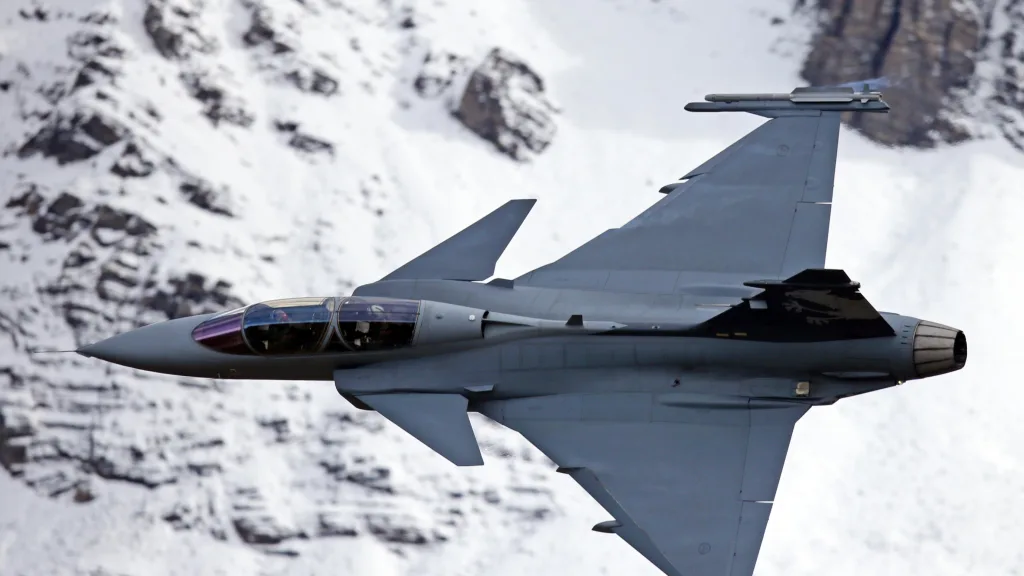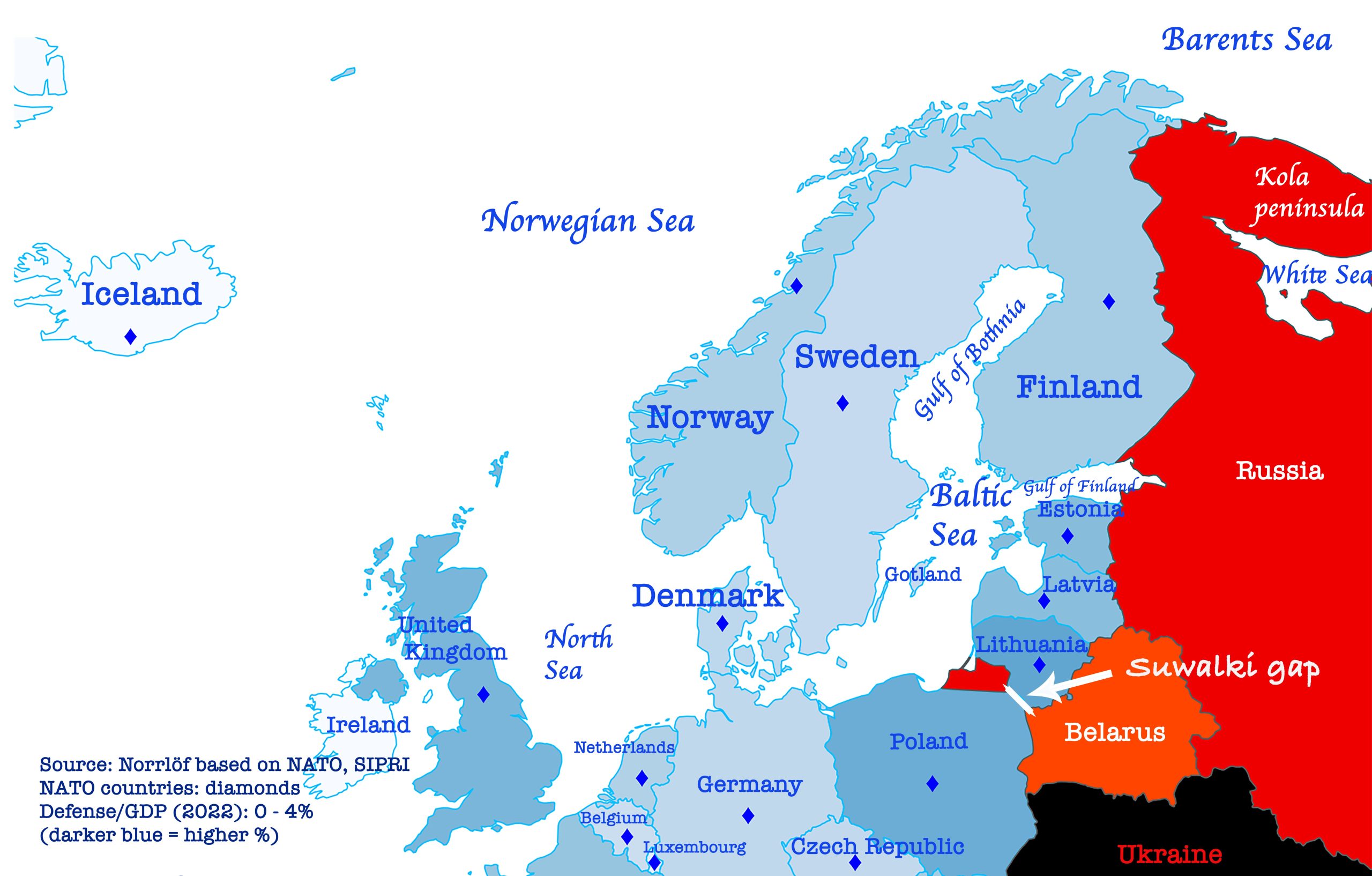
On March 7, Sweden officially joined the North Atlantic Treaty Organization, ending its 200-year-old policy of neutrality. The decision was largely influenced by the changing security environment following Russia’s 2022 invasion of Ukraine, and geographic considerations.
Sweden embraced neutrality as a result of repeated conflicts with Russia—particularly the early nineteenth-century Finnish War, when it lost Finland to Russia. Now, Russian aggression has forced it into a dramatic reversal that will have major implications for the regional balance of power.
Following the Great Northern War (1700-1721), and the loss of Finland to Russia in the early nineteenth century, Sweden gradually concluded that neutrality would best serve its sovereignty and national security. It avoided armed conflict, abstained from involvement in great-power spheres of influence, eschewed military alliances, and focused on international peacekeeping and humanitarian initiatives. During the Cold War, its official policy was characterised as ‘alliansfrihet i fred, syftande till neutralitet i krig’ (‘non-alignment in peace, so as to maintain neutrality in war’), despite being economically, culturally, and militarily aligned with the United States.
Still, Sweden’s policy did evolve over time. After joining NATO’s Partnership for Peace in 1994, it started actively participating in NATO operations, EU-led rapid-response forces, and multinational defense initiatives. It also provided specialised training for peacekeeping through its participation in various interoperability and readiness programs.
Sweden’s NATO accession can be understood as part of the broader trend towards (defensive) militarisation across Europe and within the European Union. Now that Russia’s war on Ukraine has elevated security concerns and disrupted energy supplies, European leaders are focused squarely on achieving strategic autonomy and mobilising collective responses to Russian aggression.
To name just one potential threat, the transformation of the Baltic Sea region into a ‘NATO lake’ may lead the Kremlin to seize the Suwałki Gap, a sliver of Polish territory between the Russian exclave of Kaliningrad and Belarus. Given this fraught geopolitical context, the EU is drawing up plans for a ‘war economy’ oriented around higher defense spending and energy and supply-chain security.
The EU’s transition to a war economy will bring a significant boost to the defense sector. One recent proposal, the European Defense Industrial Strategy, aims to create new incentives for European arms manufacturers to increase investment and output, and to encourage more collective procurement of European-made arms. The goal, reflecting European anxieties about the upcoming US presidential election, is to accelerate efforts to strengthen supply chains and meet heightened demand for military hardware in the face of crises.
The shift in public opinion within Sweden has been remarkable. Around 68% of Swedes polled are now positive toward NATO membership, compared to 30% in 2019, and there is a broad political consensus for NATO membership (with only the Greens and the Communists openly opposing it).
Sweden’s geographical proximity to Russia cannot be ignored. Swedes know that they are well within range of Russian air and naval power. Russia has increased its maritime presence, exercises, and maneuvers in the Baltic Sea, posing a significant threat to Sweden’s economy and sea lanes. Russian undersea operations in the vicinity have raised national-security concerns, invoking memories of the 1981 ‘Whiskey on the Rocks’ incident, when two Swedish fishermen came across a beached Soviet submarine within Swedish territorial waters.
Moreover, Russia’s anti-access/area-denial capabilities—including cruise missiles, surface-to-air missiles, and nuclear weapons based in Kaliningrad, along with its strategy of engaging in hybrid warfare below the threshold of armed conflict—continue to pose a serious threat across the Baltic region.

These threats demand a robust defense posture and heightened surveillance to deter aggression. Sweden has already increased its military presence on the island of Gotland in the Baltic Sea, following Russia’s deployment of landing ships through the Great Belt Strait. Now, integration into NATO’s collective-defense framework will further enhance its ability to counter such threats.
Although Sweden has already been cooperating intensively with NATO, full membership will deepen the relationship significantly. As a formal member, Sweden will be directly protected under Article 5 of the NATO Treaty. Greater access to cutting-edge military technology and deeper intelligence insights will strengthen its defense capability against air, naval, submarine, and cyber threats. And it will play a greater role in shaping the alliance’s strategies, particularly in Northern Europe.
NATO also benefits from Sweden’s accession, of course. Sweden’s strategic assets include Gotland (a key hub for deploying reinforcements during any conflict); a strong defense industry that produces world-class military equipment (notably advanced Gripen fighter jets); and a modern, highly experienced submarines fleet.
Swedish accession also means that all Nordic countries—Denmark, Finland, Iceland, Norway, and Sweden—are now aligned under the same security umbrella, mutually reinforcing NATO’s capabilities and obligations on its northern flank and on its eastern flank across the Baltic Sea. Moreover, Sweden’s change in policy may convince other neutral EU countries like Austria and Ireland to join, too, potentially leading to a significant reconfiguration of security alliances across Europe.
Of course, while NATO enlargement enhances collective defense, it also intensifies Europe’s security dilemma. Russia frames any new additions as a sign of strategic encroachment, thus increasing tensions. Having promised to respond to Sweden’s accession, the Kremlin may scale up military activities nearby or pursue more aggressive posturing, with frequent military exercises and deployments of advanced weaponry closer to NATO territories.
To show that it respects Russia’s own security and commercial interests, Sweden should continue to emphasise that its membership is a defensive precautionary measure, and that access to the Baltic Sea remains open. With NATO’s presence expanding substantially in the Arctic—an area of growing importance for Russia (and China)—the situation calls for careful strategic balancing. Russia inevitably will claim that NATO is trying to encircle it. Precisely how it responds has become the most important strategic question for the region—and for NATO.

